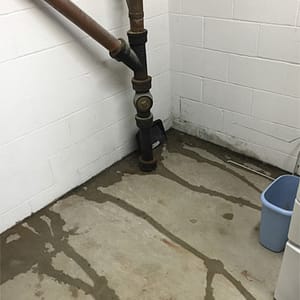Some Known Facts About Best Basement Waterproofing.
Table of ContentsThe Facts About Best Basement Waterproofing UncoveredSome Known Factual Statements About Best Basement Waterproofing Some Known Incorrect Statements About Best Basement Waterproofing The Ultimate Guide To Best Basement WaterproofingNot known Facts About Best Basement Waterproofing
uses excavation strategies toward the bottom of the framework's structure. entails eliminating wetness after it has actually gone into the basement. AdvantaClean's skilled experts and specialists will locate the water resource. If wall surface or piece cracks are existing, we will certainly inject polyurethane and epoxies into the cracks and seal the concession, avoiding additional moisture from entering.Mounting cellar air flow systems, conditioning systems, or cellar dehumidifier systems to get water out of your basement. Picking AdvantaClean's basement waterproofing services is a reliable way to treat moisture and stop mold and mildew from compromising the framework of your home and the health of your household.

The Ultimate Guide To Best Basement Waterproofing
You can waterproof just your interior wall surfaces, which might resolve the problem. Or you can waterproof your outside walls, which is a far better bet but more pricey. Here's the inside story on the different kinds: These thick coatings are cement-like. Once they dry out, they adhere completely to concrete and masonry walls. Best Basement Waterproofing.
Concrete water resistant layers can't be used to formerly painted surfaces; inspect the tag. Understood as densifiers, they are appropriate just for wall surfaces that have not been painted or sealed.
You brush, roll, or spray it on a lot more heavily one gallon covers simply 75 square feet, not the 300 square feet common with standard paint. Water resistant paint is fine for do it yourself application. You can use it over repainted surface areas, and paint over it once it's treated (one gallon prices $37).
It can cost $10,000 to $15,000, depending upon the work needed. Outside waterproofing includes excavating all around your home to the complete deepness of the foundation wall surfaces, after that setting up a water resistant coating or membrane layer covered by drain panels. The panels offer a simple course for water to move to an exterior French drainpipe at the base of your foundation.
The 4-Minute Rule for Best Basement Waterproofing
A basement without waterproofing is kind of like that. Your basement doesn't want to go through a downpour without proper defense just as much as you don't want to.
But if you have actually done your from this source study, you 'd understand there are two kinds of waterproofing: exterior and interior. It can get perplexing what they both mean, which one's a better financial investment, and what will actually maintain the water out. Don't fret, we assembled this blog site to easily define both techniques for you and go over the benefits and drawbacks of Get More Info each.
Outside waterproofing is a waterproofing method that involves sealing your home from the outside. The foundation walls are after that cleaned, sealed, and covered with a water resistant membrane or sealer.
Best Basement Waterproofing Things To Know Before You Get This
The biggest benefit of exterior waterproofing is that it stops water from entering your cellar to begin with. Unless you have a dripping washing equipment, water usually goes into the cellar from the exterior. Groundwater and hefty rainfalls can permeate in with the splits in your structure, so outside waterproofing can prevent water from entering your home.
Inside cellar waterproofing includes waterproofing from the inside. Any water that leakages right into your cellar is redirected prior to it touches your flooring.
The Buzz on Best Basement Waterproofing
It's an efficient technique to water-proof your basement. The disadvantage of indoor cellar waterproofing primarily relates to the installment process. This technique calls for saved items, furnishings, and integrated shelving or cabinets to be moved from touching the cellar walls. And throughout installation, your cellar can not be utilized. The greatest distinction between both approaches is this: Outside waterproofing is a preventative remedy and interior waterproofing is a rehabilitative solution.
Finally, exterior and interior basement waterproofing are both effective techniques of shielding your home from water damages. Exterior waterproofing produces an obstacle that avoids water from entering your home, while indoor waterproofing reroutes water that does enter your home. And it's crucial to note that outside waterproofing is an expensive and disruptive setup procedure when contrasted to interior waterproofing.
Whichever technique you select, see to it you pick a reliable and reliable professional for the task. Both approaches call for experienced employees to take care of the task. If you have any type of concerns regarding basement waterproofing, please reach out to us. And if you're in our solution area and have water in your basement, call us for a complimentary, no-obligation home assessment.